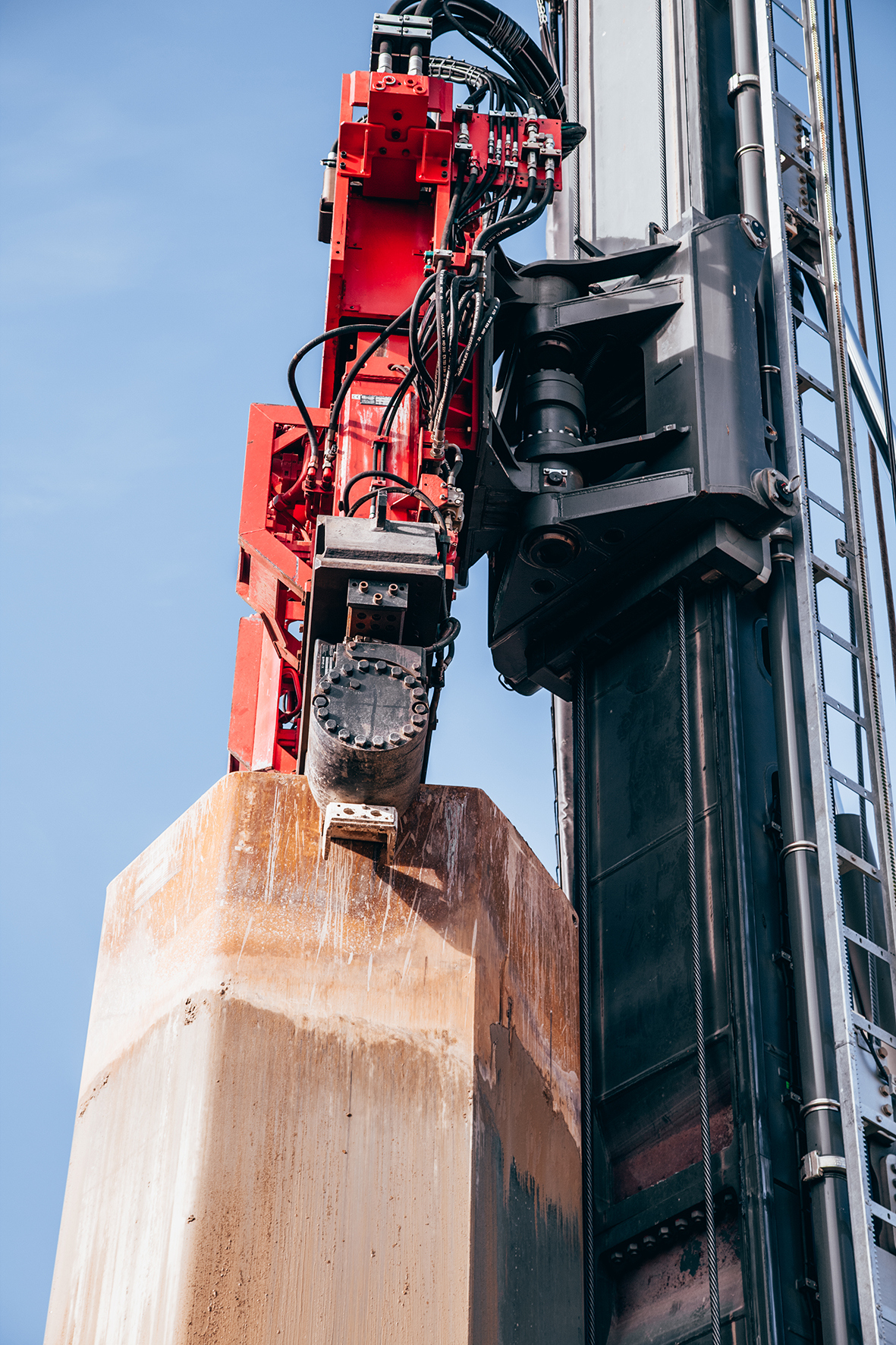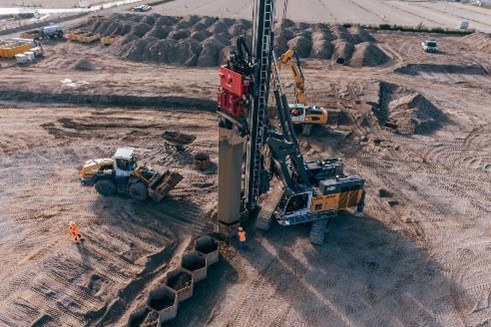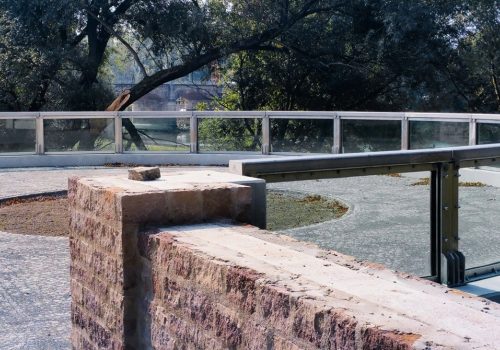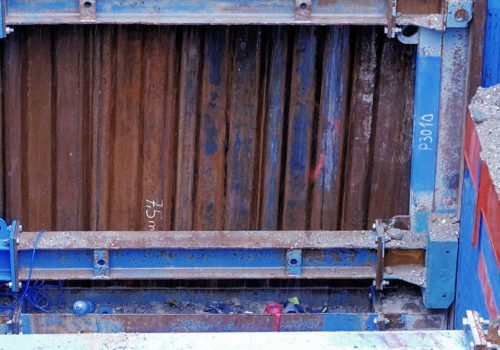A new 60-hectare technology park is being built in Ingolstadt in the immediate vicinity of Audi AG's headquarters on the former Bayernoil AG refinery site. With this ambitious project, the car company is creating the space to develop new technologies for the mobility of the future. But before that can happen, the AUDI IN-Campus GbR GbR consortium (ZÜBLIN Umwelttechnik GmbH, Geiger Umweltsanierung GmbH & Co. KG, Wilhelm Geiger GmbH & Co. KG and STRABAG Umwelttechnik GmbH) to remove contaminants from the soil: In addition to downstream protection to protect the Danube floodplain, a triad of air sparging (process for removing volatile pollutants by means of air flow), honeycomb process (soil exchange process) and soil washing plant were used here, with the MÜLLER vibratory pile driver also playing an important role.
When carrying out the honeycomb process, the experts resorted to the idea of attaching a free-riding MÜLLER MS-40 HFV vibratory machine from terra infrastructure to a Liebherr carrier machine. Since the engine power of the carrier was sufficient to also power the pile driver, the result was a highly mobile and powerful leader-guided pile driving system. The MÜLLER vibratory machine vibrated the steel honeycombs more than 25,000 times into the contaminated subsoil at depths of up to 12 meters. Approximately six hectares of the most heavily polluted area were freed from the contaminated sites in this way. In view of the difficult soil conditions, the idea of converting from the free-riding version to the leader-guided one proved to be a successful one. The combination of MÜLLER vibratory machine and Liebherr carrier had such a great impact and power that the geology with the Danube gravels no longer played a significant role. Free-riding systems use the dead weight of the vibratory machine to place the soil honeycombs, which was about 14 tons for the machine used in Ingolstadt. However, with the carrier machine, it was now possible to additionally apply up to 50 tons in case of an emergency.The construction site was set up in June 2017, and the first honeycomb was placed in the ground in August 2018. The starting signal for a cycle that lasted two years: The vibratory machine always vibrated six to seven honeycombs into the ground before the chain excavator with grab extension and a grab adapted to the honeycomb geometry took the loaded soil out of the honeycomb and it was transported to the washing plant. During excavation, the extension could always be rotated by one-sixth so that the honeycomb could be emptied with a precise fit. After three or four excavated honeycombs, they were then backfilled with cleaned soil material from the washing plant using a wheel loader. Between excavating and backfilling, haste was required because of the groundwater. Once the honeycomb was completely filled, it was pulled out of the ground with the vibratory pile driver and reinserted directly into the ground at the next location. Thus, the now leader-guided MÜLLER vibratory machine was always in use and constantly on the move on the job site.
The MS-40 HFV coped excellently with the many hours of work - both in terms of heat generation during continuous operation and stability at the speeds. MÜLLER vibratory machines are versatile - whether free-riding for smaller projects or leader-guided for large projects is therefore the conclusion.




you might also be interested in
-

Glass Wall in the Turmschanzenstrasse Area, Magdeburg
To maintain the view of the river in the Turmschanzenstrasse area, we installed glass walls at various points consisting of individual glass panels in different sizes.
To the post -

Trenchless Crossing
New laying of an underground power line from the central substation to the north substation closes the inner-city power line network and increases the security of supply in the urban area.
To the post -

Flood Protection in Fargo, North Dakota, USA
The city of Fargo is located on the Red River, which repeatedly flooded existing flood defences and roads during the winter months.
To the post